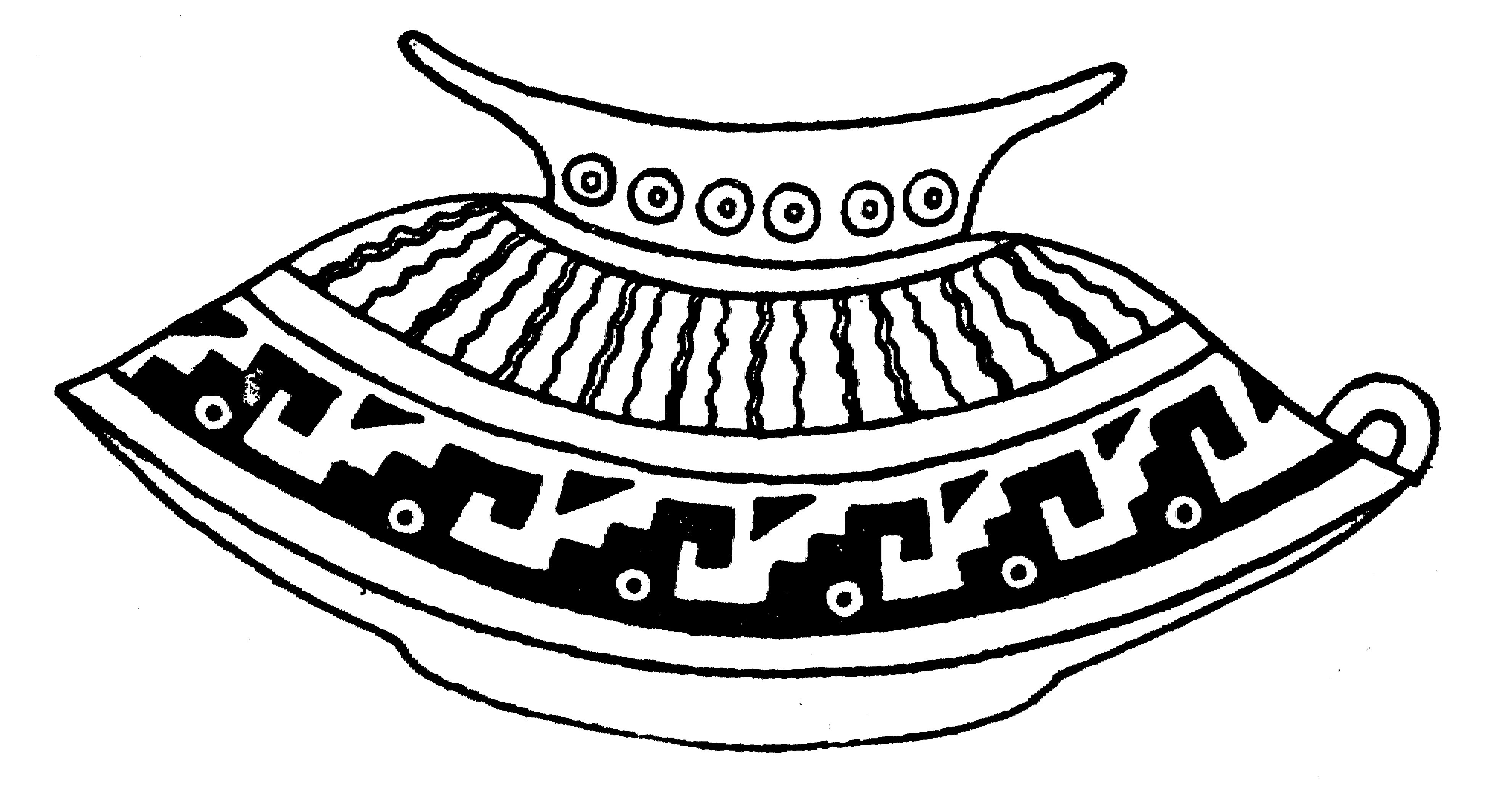|
||||||||

GD34
|
kava |
The word kava means disagreeable taste (salty, sour etc). The Polynesian kava drinking ceremonies are famous. A non-alcoholic bevarage is used to induce a state of relaxation. |
||||||
A few preliminary remarks and imaginations: 1. The kava glyph type is like a crooked henua with sharp angles at the bends. It is as if the path of light had rugged terrain to pass over. All over South America there is a sign, the 'staircase' sign (Posnansky), which appears in several different shapes and probably originated in Tiahuanaco, where straight lines and right angles were everywhere to be seen. Maybe this 'staircase' path of the sun is due to the geography with mountain ranges making it impossible for the sun rays to illuminate all the earth below at once.
This piece of ceramics (Posnansky) has the 'staircase' painted on it in black and white. As I interpret the design it is the earth receiving light, heat and water (wavy lines) from the sun (6 double suns at the top). Our world in the sun is light and the black world below (as in a mirror) has another 6 double suns. There is a black triangle above our steplike world in the light. In the 'black mirror' we can see the black triangle reflected as a white sun with black interior. When we are at winter solstice the sun stands at its highest on the other side of the earth (in the Otherworld as the Maya would say). In Central America too we can see this fundamental play of light and darkness. Famous is the snake undulating along the northern staircase of the Pyramid of Kukulkan (the feathered serpent) in Chichen Itza. The Egyptian picture below has the path of the sun illustrated as a snake and the 4 heads are - according to Wilkinson - the four sons of Horus (the sungod). I suppose one interpretation is that they represent the four cardinal points (or maybe the four seasons):
|
||||||||

